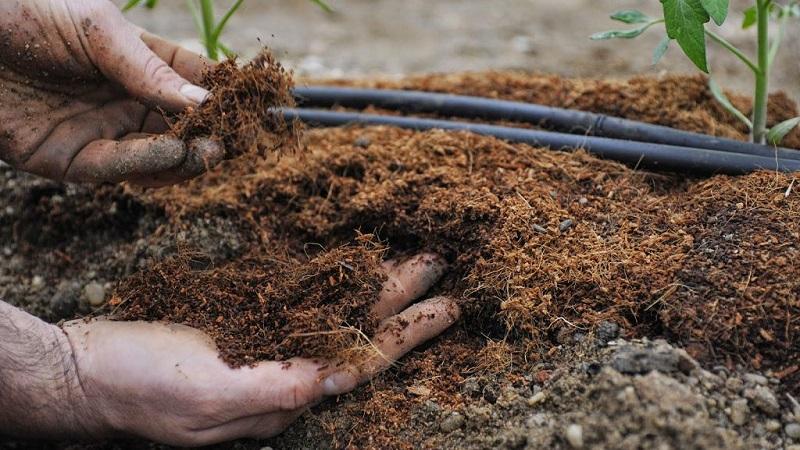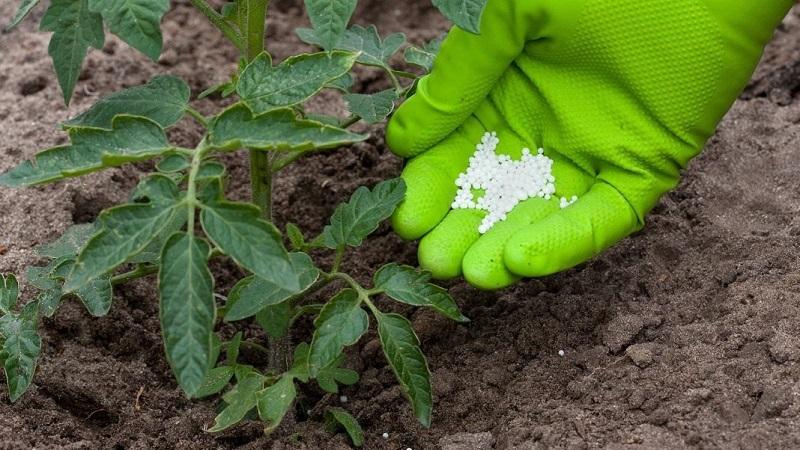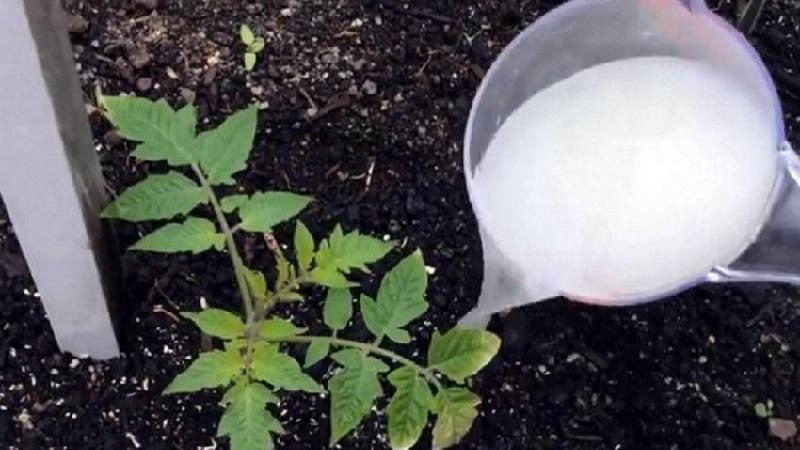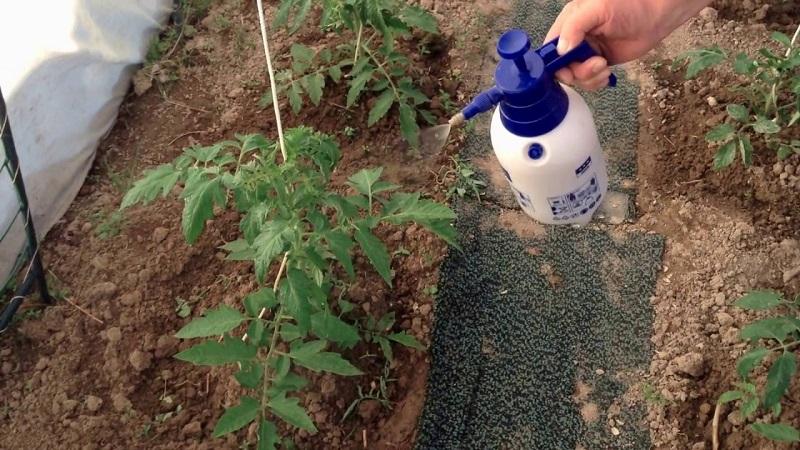How and what to feed tomatoes after planting in the ground: the best folk recipes and an overview of ready-made compositions
If you have grown tomato seedlings from seeds at least once, then you know how much care is needed for immature seedlings. It is important to maintain the air temperature at the required level, ensure the illumination of the room, and saturate the soil with moisture. After all the efforts spent on growing seedlings, every tomato grower dreams that, after planting in the ground, the seedlings will start well, get stronger, become strong healthy tomato bushes and give a rich harvest. In order for all this to work, it is desirable to stimulate the growth of seedlings.
From the article you will learn how to feed tomatoes after planting in the ground, and which fertilizer recipes for tomatoes are the most effective.
The content of the article
The role of fertilizers in growing tomatoes
Experienced gardeners believe: even if tomato plants are formed correctly, have a developed root system and are planted on fertile soil, you cannot get a rich harvest without additional nutrient dressings.
Important! It has been empirically proven that with proper feeding, the yield of tomatoes increases by 20-30%.
Next, we will consider the basic rules for feeding tomatoes.

Rules and recommendations for fertilizing
Lack of nutrients affects the appearance of the tomato bush... He himself tells his master what he lacks for full development. Here it is important for the tomato grower to be observant and be able to recognize the given signs.
Read also:
How to make tomatoes blush faster
What tomatoes lack - we determine by external signs
Do you see a blue or purple tint on the leaves and stem? Or is the tip thinning? These are clear signs of phosphorus deficiency.... In such a situation, the solution will be to feed the tomatoes with a water-soluble phosphorus fertilizer (for example, potassium monophosphate).
Tomatoes signal by rolling their leaves... This indicates a lack of trace elements. The tips of the leaves even dry out or curl upward - this indicates a lack of potassium. The infusion of wood ash will replenish the balance of potassium and phosphorus. We give his recipe below in a review of folk remedies.
Plants also show "overfeeding" with fertilizers by their kind... For example, nitrogen. It happens when a lot of fresh manure is introduced into the ground before planting seedlings. In such cases, the top leaves of the tomato bush are twisted into a ring. The problem will be solved by excluding nitrogen in further feeding. Leaves as a balance indicator will level out.
What are the types of dressings
Top dressing are:
- Root... With them, nutrients are applied directly under the root. Before applying root fertilizers, the soil must be shed with plain water. This makes feeding more effective: the nutrient solution is not spent on moistening the earthy coma and is consumed by the plant.
- Foliar... The tomato bush is fertilized through the ground part. Most often - on the stems (root fertilizers) and leaves.
Attention! It is important to respect the dosage when applying fertilizers. Otherwise, the plants will get burned.

Folk dressing recipes
Consider recipes for plant nutrition from professional tomato growers... The compositions are time-tested.They contain only components generally available to gardeners.
Ash infusion
To prepare the infusion, take ordinary wood ash or ash from the oven... In 5 liters of boiling water, dissolve 1 liter of ash. The cooled mixture in the amount of 1 liter is diluted with 10 liters of water - this is how a working solution is obtained. Tomatoes are fed with this infusion both under the root and on the leaves. The best results according to this recipe are given by foliar dressing - spraying the aerial part of the plants from a spray bottle.
Important! Foliar fertilizers are best applied in cloudy weather. Then the risk of sunburn on wet leaves is minimized.
Top dressing with herbal infusions
The infusion is prepared in a large container - a barrel or bucket... About 2/3 of the volume of the container is filled with grass (weeds from the beds, lawn or meadow grass). The container is poured to the top with water and left to ferment for 2 weeks. The fermentation process will become more intense if you add 1 liter of soil to a bucket of mixture.
Chicken droppings
The effectiveness of fertilizing tomatoes with chicken manure among gardeners is not unambiguous... Some tomato growers say that such feeding helps to improve the yield. Approve a solution of chicken manure in the amount of 0.5 liters, diluted in 10 liters of water. In this case, root dressing is carried out at the rate of 0.5 l of solution per one tomato plant.
Other tomato growers say that after fertilizing the bushes, only green tops grow, and there are few fruits on the bushes.
Milk serum
Serum has a beneficial effect on plants after planting in the ground... Its solution is applied as a preventive measure against late blight. The whey solution applied to the leaves forms a thin film on the surface that prevents the development of diseases. The solution is prepared by diluting 1 liter of whey per 1 liter of water.
Spraying of plants by the number of applications is not limited... It can be repeated at least every week. Especially when growing tomatoes outdoors, where they are exposed to atmospheric influences such as wind, fog and rain.

Yeast feeding
Yeast is considered an effective growth promoter for tomato seedlings.
Top dressing is made on the basis of starter culture from:
- 50 g fresh baker's yeast;
- 30-35 g sugar;
- 1.5 liters of water.
The sourdough is ready in 4-5 days... It is used mainly for root dressing. The entire volume of the starter culture obtained is diluted in 30 liters of water. Solution consumption - 100-200 g per plant before planting in the main place. If you feed seedlings after planting in the ground, the dosage can be increased to 0.5 liters under a bush.
More about growing tomatoes:
Mineral dressing
With the growth and development of tomatoes plants most of all need mineral fertilizers:
- Phosphoric. The deficit is solved by adding superphosphate.
- Potassium. Potassium chloride helps.
- Nitrogen. Examples are ammonium sulfate and ammonium nitrate.
Stores offer many types of mineral dressings for tomatoes... Fertilizers from different manufacturers contain different dosages of minerals, so the use rate is recommended to be taken from the manufacturer's instructions or packaging.
Important! Try to follow the proportions of application recommended by the manufacturer. This is necessary so as not to "burn" the growing tomato bushes.
The best purchased fertilizers
Good reviews from gardeners, in addition to mineral dressings, receive humatescombining the properties of fertilizers and biologically active additives.
Note. Humates are completely environmentally friendly products. They are made from silt, peat, manure and organic waste.
Manufacturers produce humates in three types:
- liquid (the most popular type among gardeners);
- powdery;
- tableted.
Dilute humates according to the manufacturer's instructions on the package (on average, this is 1-2 tsp per 10 liters of water). They are applied both under the root of tomatoes (0.5 l of solution) and over the leaves, spraying the entire aerial part of the tomato bush. Processing stimulates long-term fruiting and an increase in yield up to 20-30%.
Quite good reviews for the drug "Solution"... It is a complex fertilizer diluted in water. Suitable for both root and foliar applications. According to the instructions, dilute from 20 to 40 g of the drug per 10 liters of water. Tomatoes are processed once every 2-3 weeks. Consumption of working solution - 0.5 liters per bush.

How and when to fertilize
Good yields are achieved if tomato bushes are fertilized:
- after landing in the ground;
- during budding, flowering and fruit setting;
- during fruiting.
When tomatoes begin to bloom and bear fruit, except for all the types of dressings mentioned The most necessary and effective way for tomato growers is to feed tomatoes with boric acid. For its preparation, 0.5-1 tsp is diluted in 10 liters of water. boric acid (it is better to pre-dissolve the crystals in a glass of hot water, and then dilute in the remaining volume of cold water).
Top dressing is carried out from a spray bottle on the leaves and stems. Boric acid increases the formation of the ovary, the sugar content of the fruit and prolongs the fruiting period of tomatoes.
All of the above rules apply equally to tomatoes., both growing in the open field and in the greenhouse. The types of dressing, frequency and time of application are equally suitable for both.
Let's sum up
The lack of nutrients and trace elements immediately affects the appearance of tomatoes - the leaves curl and change color. In such a situation, it is important for the tomato grower to quickly navigate and take measures to help the plants. Top dressing in this matter is the best solution.
It is important that the gardener does not have to make serious financial investments for feeding tomatoes. You do not have to buy chemistry, but prepare the fertilizer yourself from the available means (ash from the stove, cut grass or weeds). If you correctly apply top dressing, tomatoes will be thanked with a good harvest, 20-30% higher than expectations.